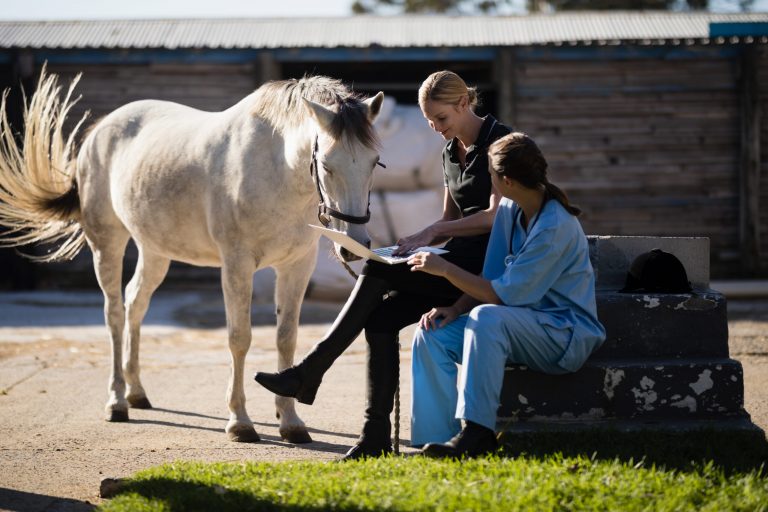
In Episode 64 of the Disease Du Jour podcast, we speak with Amy Johnson, who received her DVM from Cornell University and is a Diplomate of the American College of Veterinary Internal Medicine – Large Animal and Neurology. She is the Section Chief of Internal Medicine & Ophthalmology at the University of Pennsylvania School of Veterinary Medicine.


EquiManagement’s Disease Du Jour podcast is focused on equine research and current best practices. Disease Du Jour is brought to you in 2021 by Merck Animal Health.
“Rabies is a great mimicker,” said Johnson. “Horses can come in as lameness, choke, colic or other suspected neurologic disease. If a horse comes in with signs of encephalitis and cranial nerve signs and no good history of vaccination, be suspicious.”
She recommended that veterinarians wear gloves for every neurologic case and that the front desk personnel or solo practitioner get the rabies vaccination status of every horse, especially for neurologic horses. Face masks, face shields or goggles are also helpful, Johnson said, because if a horse throws its head around you might get saliva in your eyes or mouth.
Learn more about Johnson’s experiences and advice to veterinarians and peronnel who could be exposed to equine rabies by listening to the podcast.

EquiManagement’s Disease Du Jour podcast is
focused on equine research and current best
practices. Disease Du Jour is brought to you
in 2021 by Merck Animal Health.








